
Temples and Doubles: Uncovering Indian Influences in the Caribbean
The air is fresh and birds are flying as we drive down the Old Southern Main Road in Trinidad & Tobago.
Alongside Derek Donowa, a knowledgeable guide with Gail’s Exclusive Tour Services, I am on a mission to delve into a topic that is perhaps unexpected while visiting the most southerly nation in the Caribbean – the influence of India.
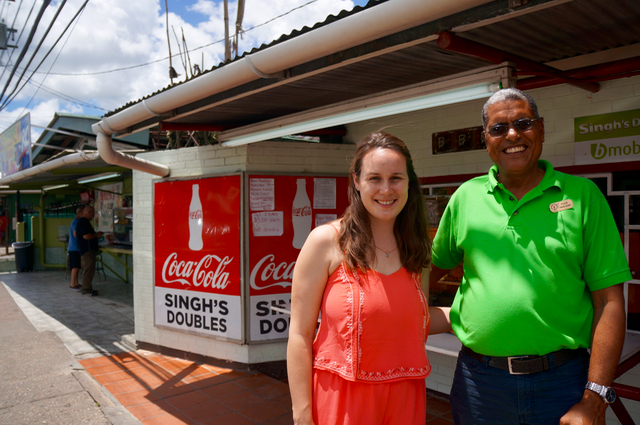
Indentured Servants in Trinidad & Tobago
Trinidad, one of the two islands that form one country, has lush and fertile lands. In the 19th century, the strength of the sugar cane crop – and slave labor – allowed the former British colony turn a profit. When the international slave trade was abolished in 1838, plantation owners panicked, in need of a new workforce to operate their fields. The sugar cane industry looked to another member of the commonwealth for a solution – India.
In 1845 the first wave of indentured servants from East India arrived to the island to carry out five- year contracts. For Indians who fell on the bottom rungs of the caste system, this was seen as a golden opportunity to flee oppression and start life anew. Many continued working in the country after the length of their original contract concluded.
Today 40 percent of the country’s population can trace its roots back to India and this influence permeates through nearly aspect of modern “Trini” culture, from cuisine and music to religious celebrations and architecture.
Doubles in Debe
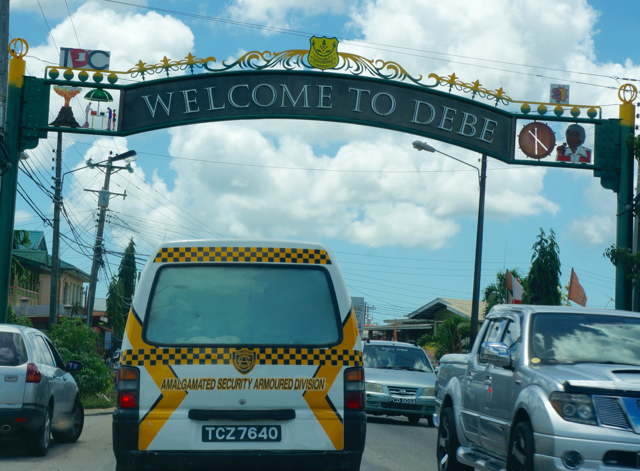
From the capital city of Port of Spain, today’s undertaking carries us to our first stop in Debe, a rural village known for its Indian delicacies. Specifically, Debe is thought to be the birthplace of doubles, a savory sandwich-like dish that consists of barra, a fried dough, chick peas and pepper sauce.
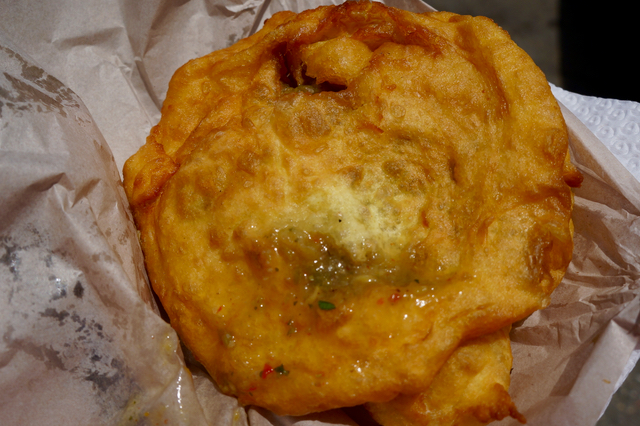
This dish was developed for workers to eat on their walk to the plantation fields in the morning since they needed something substantive to eat quickly. Originally sold as single barras, workers would ask for a “double” to better fill up, and soon the sandwich became the norm.
As I stand on a street corner in Debe the doubles come hot and fresh – straight from the kitchen. They are delicious, but hot. Even though I’ve ordered mine with pepper light, it still leaves a slight burning sensation in my mouth.
Sugar Cane
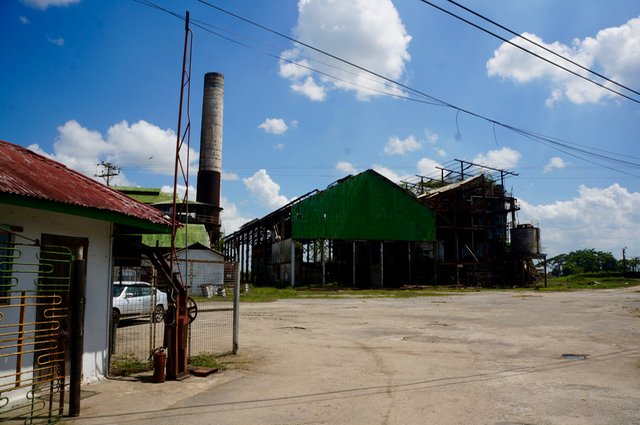
From Debe we drive past a sugar mill – the last of the 83 on the island to operate – and through old plantation fields to the now closed Sugar and Heritage Museum in Couva.
The crumbling estate offers a glimpse into the sugar era on the island, and this chapter of history becomes more personal as Derek reveals that, as a child, his father worked for Caroni Limited and he lived on this land. The vacant, dilapidated grounds come to life as Derek recounts stories of studying at the elementary school on site, the music that would swirl out of the officer’s club, and swimming with caimans in a pond that has sense dried up.
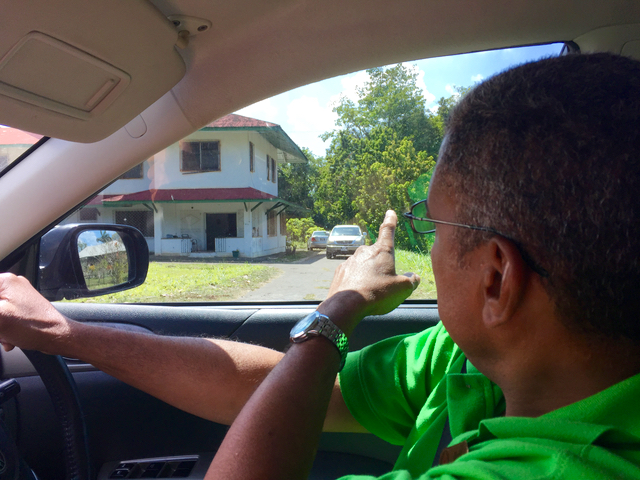
“It’s good to reminisce,” Derek says as we drive past his former house, which is now in a state unfamiliar to him.
“I am looking at my home,” he says. “My past home… it is not like I left it.”
Caroni Limited closed in 2003 when the low cost of the sugar beat, produced on other islands in the Caribbean, put the final nail in the coffin of Trinidad and Tobago’s sugar cane industry.
Though we drive away from the estate on a melancholic note, the mood swings back when we stop in at a local shop for a lunch of rot, another Indian delicacy unique to Trinidad. The shop owner doles out the last of her curried beef wrapped in warm dough and smiles so sweetly I am lulled back to peace.
Temple in the Sea
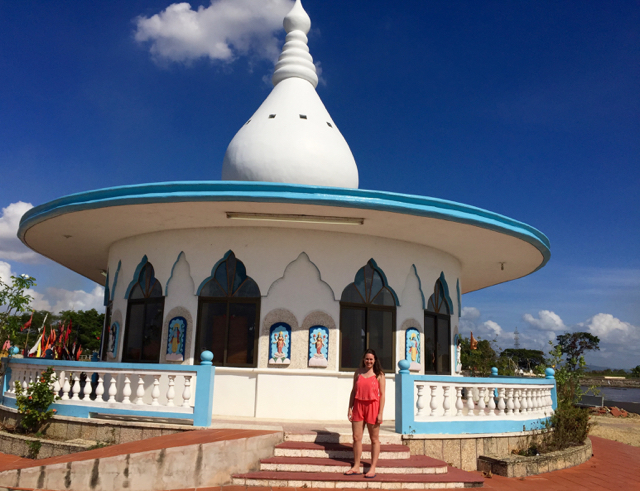
The theme of peace continues as we make our way to the Temple in the Sea, a majestic white temple that protrudes out of the waters of the gulf. The tide is low this mid-afternoon and in the distance small boats rest on beds of murky mud. Clay pots speckle the ground like dots on a ladybug– offerings to Hindu deities –and prayer flags encircle the white building.
This is not the original Temple in the Sea, but a grander replica. The original was constructed in the 1930s by an Indian laborer of the name Seedas Sadhu. When the British government forbade him from building a Hindu temple on land, he bypassed the laws by building a place of worship at sea.
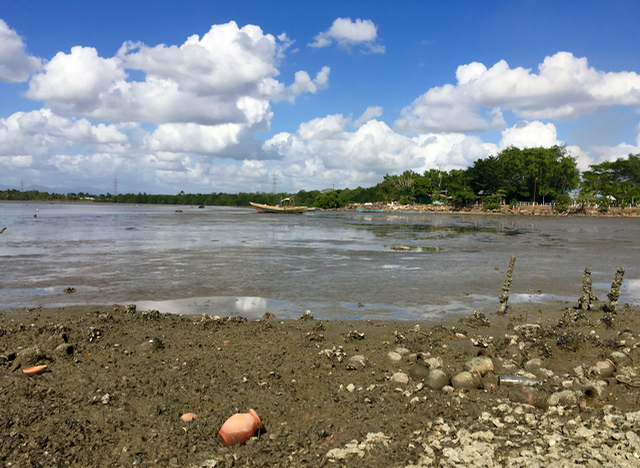
Indentureships officially ended 100 years ago in 1917. The nearby Indian Caribbean Museum recounts prominent historical figures such as Sadhu and displays a varied of artifacts. An example of a Tapia home, a typical dwelling for the laborers constructed from mud, straw and bamboo stands outside giving visitors a telling glimpse at life for these early pioneers.
Hanuman Murti and Dattatreya Temple
As we continue down the road a giant Hanuman Murti, an 85-foot tall statue of the Hindu god, Lord Hanuman and the largest outside India, rises in the distance.
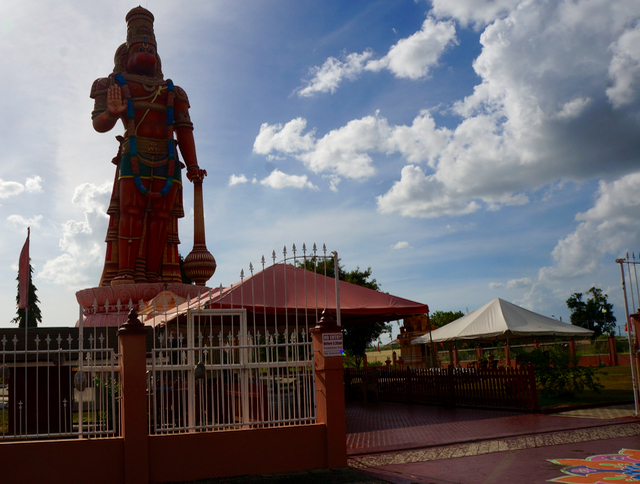
I’m thrilled as we approach the rose colored Dattatreya Temple to find that my pink romper photographs perfectly against such a backdrop. I’m less pleased however as it dawns on me that such attire is not appropriate for a Hindu temple and I will not be permitted to enter. So here’s my final tip – if you are touring the Hindu temples of Trinidad, bring an extra layer to cover up (obviously).
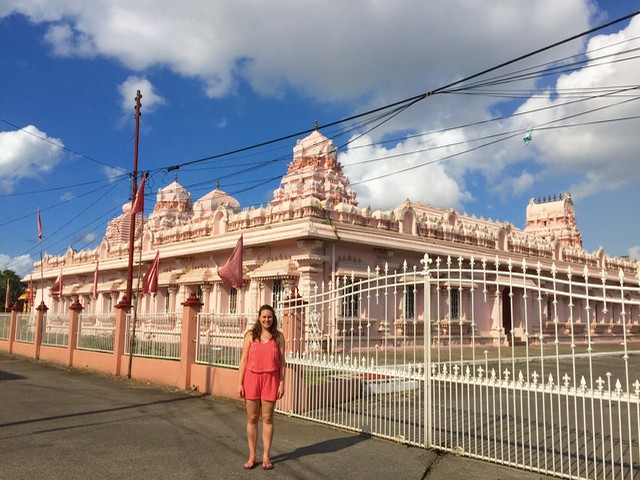
While at the Temple in the Sea Derek read aloud a sign posted in honor of the Indian indentured laborers who journey across the sea so long ago to make Trinidad their home. The sign states the temple has been built” in regognition of their pioneering spirit, sacrifice, endurance and determination to seek better livelihoods for themselves and their descendants. In gratitude fot their invaluable contribution to the social, spiritual, cultural, economic and political development of Trinidad and Tobago.”
These words are touching, but one need not read them to understand the influence of India on this small Caribbean nation. It’s an influence that’s all encompassing, heard in the beats of music that stream from bars, tasted in the spicy pepper sauce of a double and seen in the sweet smiles of those you pass on the street.
A Note of Thanks

I’d like to extend a special thanks to Suzan Gail Mohammed, owner of Gail’s Exclusive Tour Services. She worked with me before my trip to arrange a custom itinerary focused on Indian culture and, prior to my tour departure met me at my guest house armed with literature, cheer and a warm hug.
“You can have the best product, but if your service is not in tact, you have nothing,” she told me before sending me off to explore with Derek. “My main focus is service. I love meeting people and the main thing is that they are happy and enjoy it.”
The more I travel the more important it becomes to me to support women-owned businesses, and Suzan is a caring business owner dedicated to providing an authentic glimpse of her country. If you are looking to get a deep understanding of Indian influences in Trinidad and Tobago, I recommend Gail’s Exclusive Tour Services.
Sorry, the comment form is closed at this time.


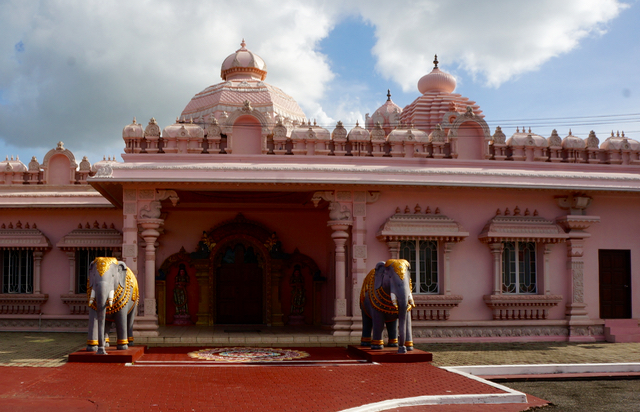

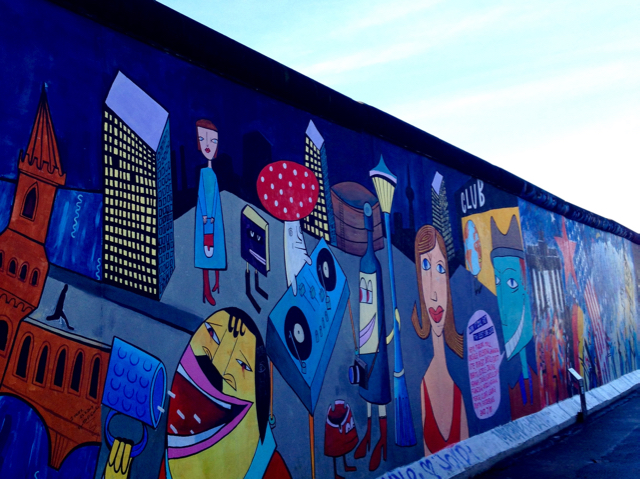

Kimberley Joyce Meehan
I’m feeling like I’ve had a vacation just by reading this ~ well done!
Lauren
So glad to hear this post gave you vacation vibes!